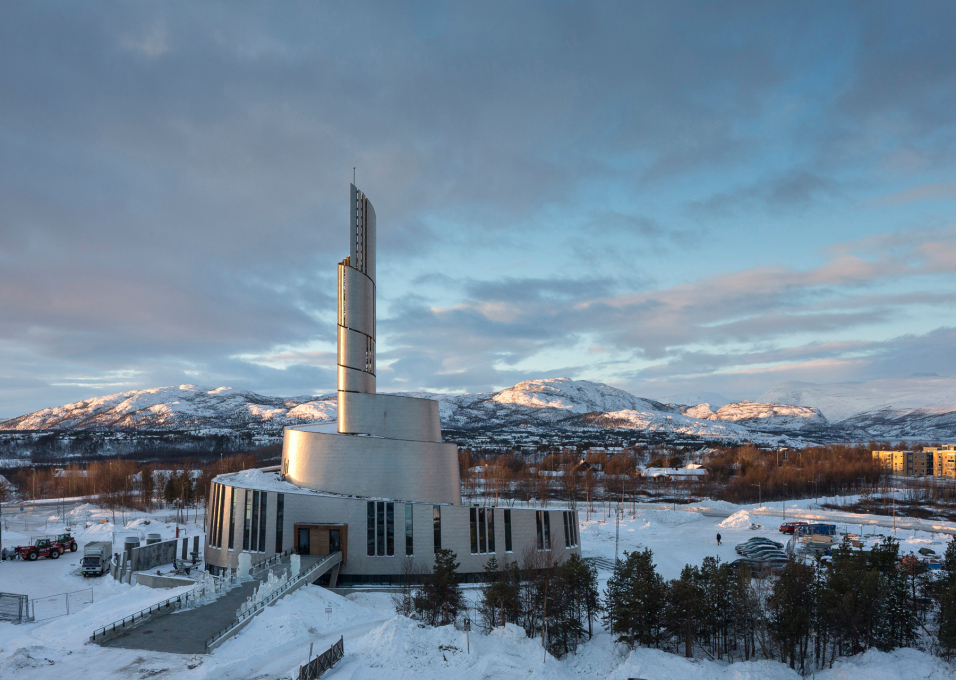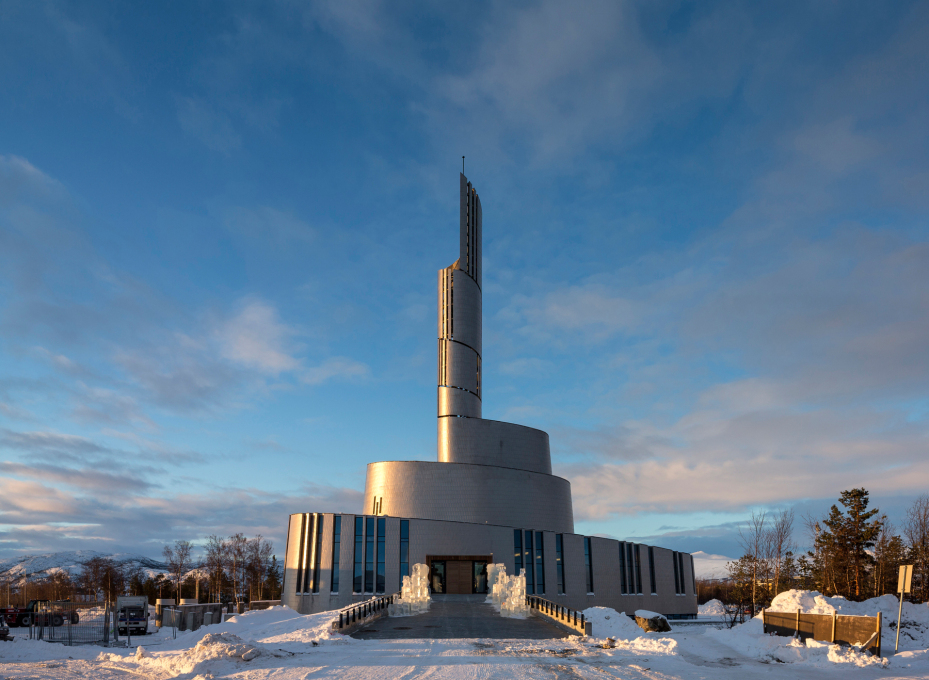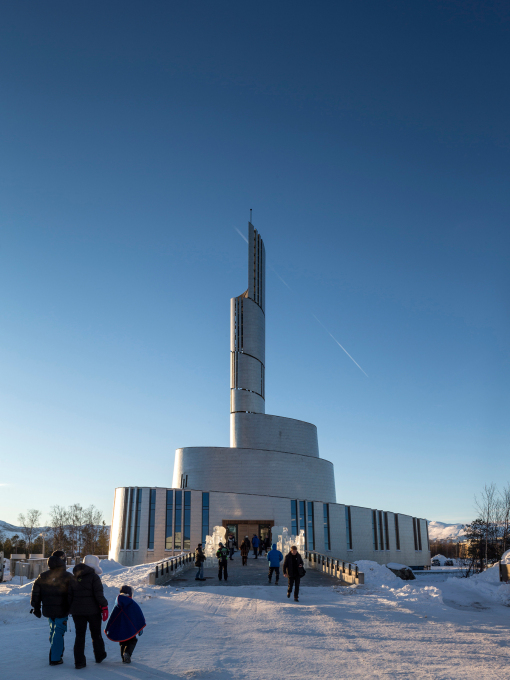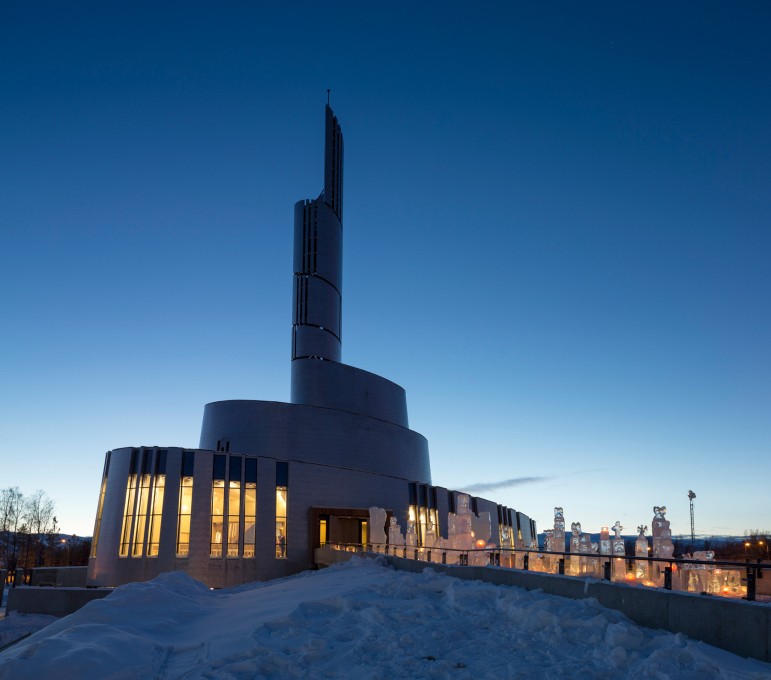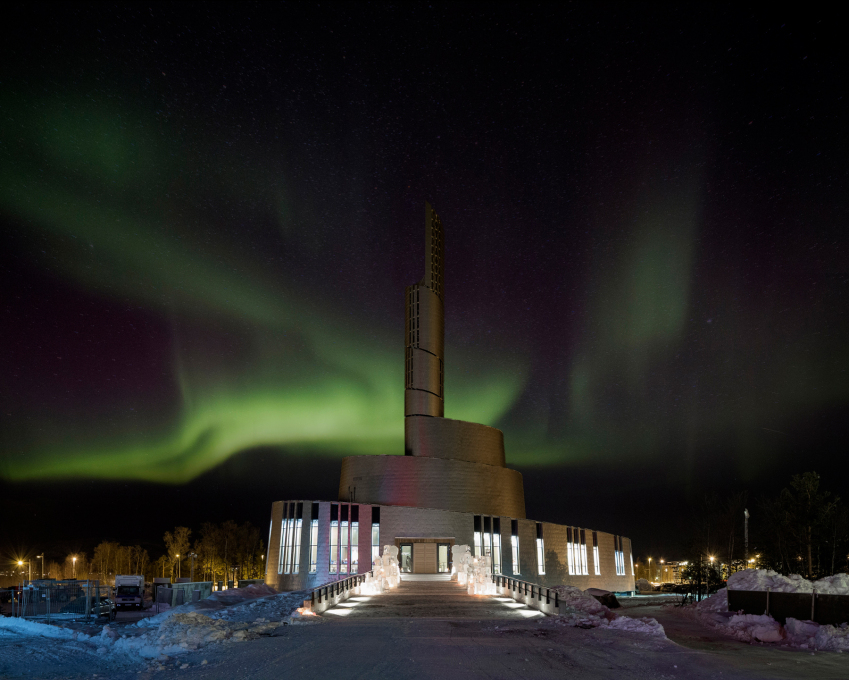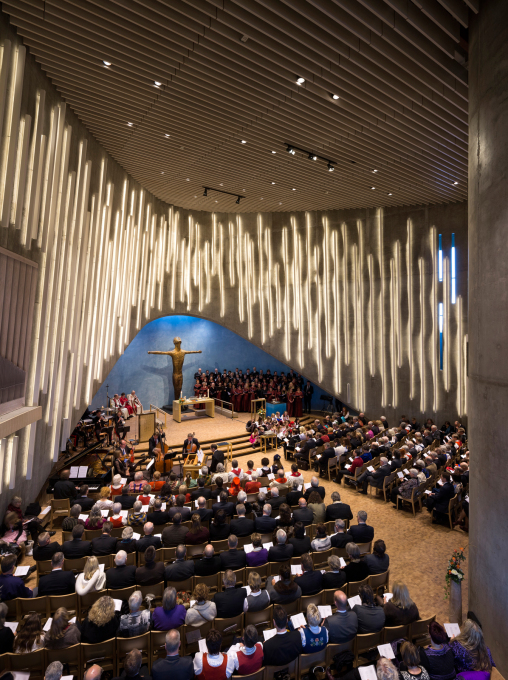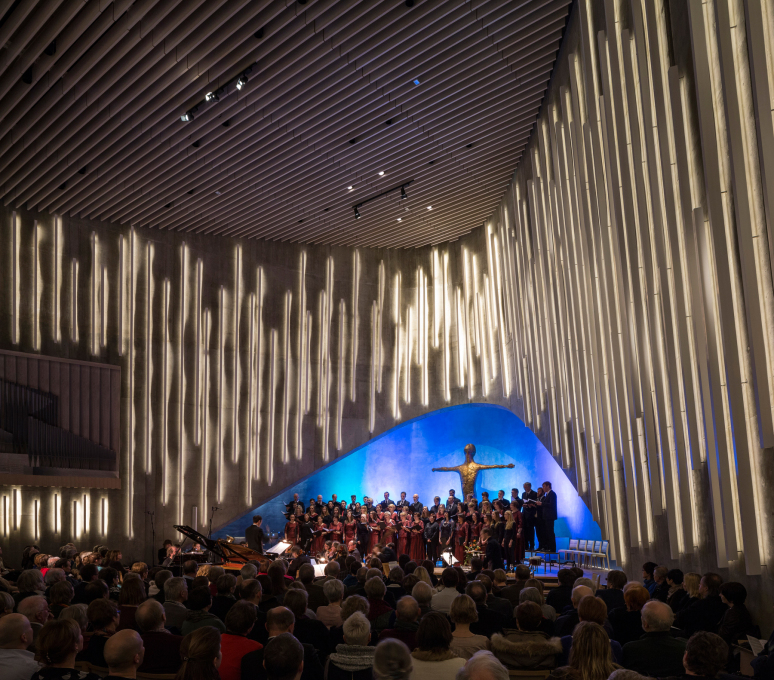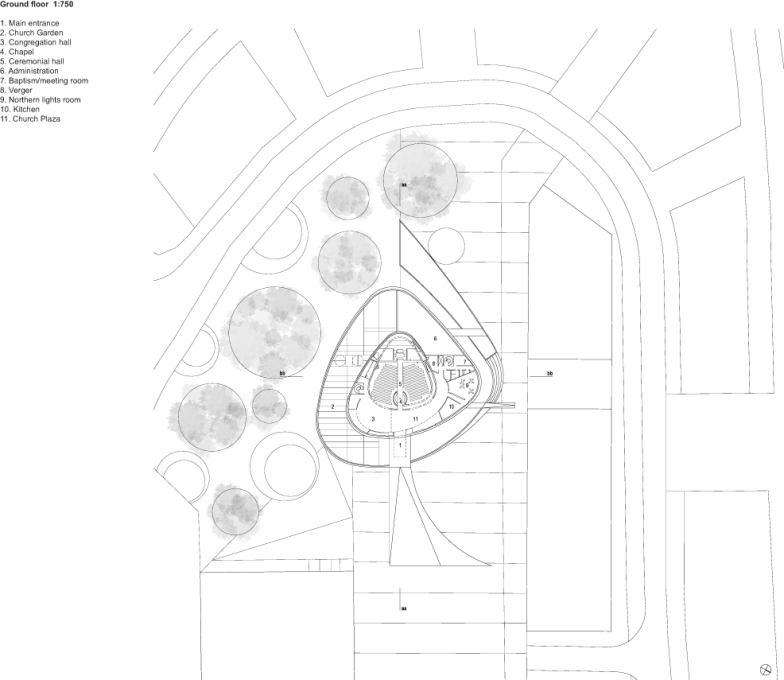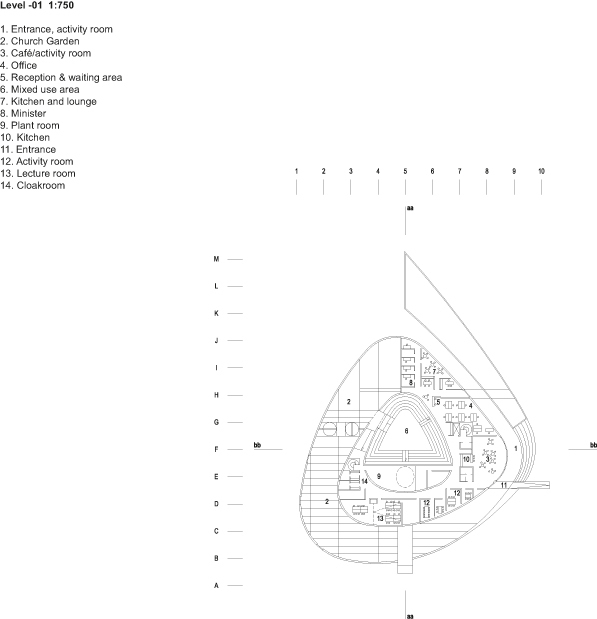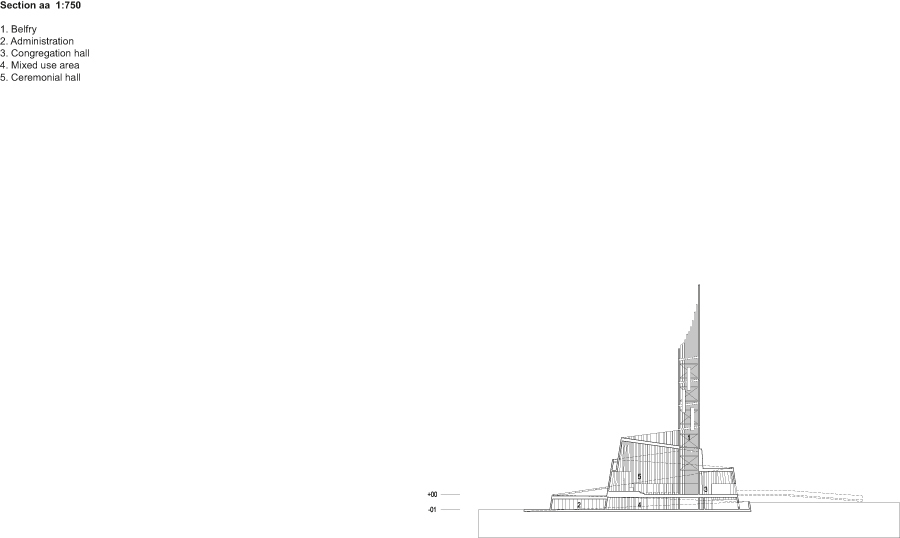The town of Alta is situated in northern Norway about 500 kilometers south of the Arctic Circle. Whilst it has a population of only around 13,000 people, it’s a major tourist destination in the region being considered both the northernmost city in the world and a good place from where to observe the natural phenomenon of the Northern Lights, the Aurea Borealis. To further build on these twin draws for visitors from abroad, the town held an architecture competition in 2001 to design its new main parish church; a building that would create both a visible, iconic landmark for the area, and a symbolic reference to the phenomenon itself. The competition was won by Danish Schmidt Hammer Lassen Architects in cooperation with Norwegian architects Link. Their design is a giant spiral, clearly drawing its inspiration from natural forms, and pointing upwards into the sky, its belfry at a height of 47 metres – making this the tallest building in Alta. The titanium-clad façade reflects the sky in the day and the Northern Lights during the long periods of Arctic winter darkness and is designed to further intensify the visitor's experience.
Inside, the main hall of the church creates a calm contrast to the dynamic exterior of the building. The materials used – raw concrete for the walls with timber floors, panels and ceilings – underline the Nordic context, referring to the most common materials of the region. Daylight enters the church room through tall, slim, irregularly placed windows, whilst a skylight lights up the wall behind the altar. The cathedral, which can accommodate up to 350 people in its main space, also has administration offices, classrooms, a parochial area and exhibition spaces. We asked the architect John F. Lassen a few questions about this extraordinary building.
What where your main reference points when developing the design of this unusual church?
I suppose the design of the Cathedral of the Northern Lights came from looking both at surrounding nature and local culture. The building is meant to be a landmark, reflecting, both literally and metaphorically, the Northern Lights: their ethereal, transient, poetic and beautiful qualities. This church is designed to appear like a solitary sculpture in interaction with spectacular nature.
To an outsider there seems to be something very special about a church in which both God and a natural phenomenon are celebrated at the same time. Is there any connection traditionally made in Norway between the Northern Lights and God?
Of course. While as such, God and the natural phenomenon have no direct connection, in the local tradition of this region, the Northern Lights have certainly always been considered to be a sign of something supernatural.
The spiraling form evokes associations of both watch tower and observatory. Is there any special place inside the church from where the Northern Lights can be watched?
Well, not in the formal sense of an observatory. But the large windows that penetrate the facade will potentially enable visitors to the church to see the Northern Lights from inside. The architecture of the church is rather meant to complement this natural phenomenon, providing a fitting backdrop for the experience of it. The entire shape and the material that we chose for the facade – the spiral and its titanium cladding - both point to the sky above and also reflect the Northern Lights.
Was it quite a challenge to design a church that’s also meant to be a tourist destination at the same time?
Actually that’s not an unusual combination. As in many other parts of the world, it’s quite common in the Nordic countries for churches to be considered as tourist destinations in themselves. Just think of Notre Dame in Paris or the Saint Peter and Saint Paul in St Petersburg.




